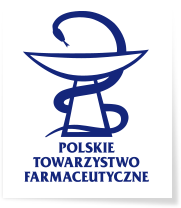Magdalena Julita Gajewska
Analysis of the content of selected heavy metals in dietary supplements available on the Polish market
2023-12-22
Analiza zawartości wybranych metali ciężkich w suplementach diety dostępnych na polskim rynku
Wprowadzenie. Spożywanie wysoko przetworzonej żywności i niedobór ważnych składników odżywczych w diecie mogą zwiększać zapotrzebowanie na suplementy diety. Ich stosowanie pozwala konsumentom na uzupełnienie deficytów witamin czy też innych składników mineralnych niezbędnych do prawidłowego funkcjonowania organizmu. Jednak, oprócz cennych witamin i minerałów, często zawierają różnego rodzaju składniki roślinne i mogą być zanieczyszczone metalami ciężkimi, takimi jak: kadm (Cd), ołów (Pb), rtęć (Hg). Preparaty o dużej zawartości pierwiastków toksycznych mogą stanowić dodatkowe źródło ich pobrania przez organizm i poza pożądanym efektem odżywczym powodować zatrucie organizmu.
Cel badań. Badania porównawcze zawartości kadmu, ołowiu i rtęci w preparatach ziołowych i witaminowo-mineralnych dostępnych na polskim rynku.
Materiał i metody. Oceniono 93 próbki preparatów witaminowych i witaminowo-mineralnych (50 zawierało składniki pochodzenia roślinnego, 43 natomiast nie zawierało składników roślinnych) pod kątem zawartości wybranych metali ciężkich, przy użyciu płomieniowej atomowej spektrometrii absorpcyjnej (FAAS) dla kadmu i ołowiu oraz metodą atomowej spektrometrii absorpcyjnej z techniką amalgamacji dla rtęci.
Wyniki. Analizowane próbki suplementów diety zawierających składniki roślinne i witaminowo-mineralne
charakteryzowały się niskim poziomem zanieczyszczenia kadmem i ołowiem i nie stwarzały zagrożenia dla zdrowia konsumenta. Zawartość kadmu wahała się od 0,010–0,710 mg/kg, natomiast ołowiu od 0,02 do 1,55 mg/kg. Średnie zanieczyszczenie kadmem i ołowiem w preparatach zawierających surowce roślinne było istotnie wyższe (p < 0,05) w porównaniu ze średnią zawartością tych pierwiastków w preparatach zawierających wyłącznie składniki syntetyczne. We wszystkich próbkach zawartość kadmu i ołowiu nie przekraczała dopuszczalnych limitów (odpowiednio 1,0 mg/kg i 3,0 mg/kg). Stężenie rtęci w badanych suplementach diety było zróżnicowane i wahało się od 0,0005 do 0,1470 mg/kg. Średnia zawartość rtęci była prawie 10-krotnie wyższa w suplementach zawierających surowce roślinne w porównaniu ze średnią zawartością tego pierwiastka w preparatach zawierających wyłącznie składniki syntetyczne, jednak różnice nie były istotne statystycznie (p < 0,088). W czterech preparatach zawierających surowce pochodzenia roślinnego zawartość rtęci przekroczyła dopuszczalny poziom (0,1 mg/kg). Badane suplementy diety nie stanowiły znaczącego źródła kadmu i rtęci, jednakże pobranie ołowiu z suplementów było znacznie większe.
Wnioski. We wszystkich badanych preparatach wykryto metale ciężkie. Suplementy zawierające surowce roślinne zawierały istotnie wyższe stężenie kadmu, ołowiu i rtęci w porównaniu z suplementami, które nie zawierały składników pochodzenia roślinnego. Wykazano, że dopuszczalne ilości rtęci w suplementach zawierających komponenty roślinne mogą zostać przekroczone, ponadto preparaty te mogą być znaczącym źródłem ołowiu. Dlatego też, konieczne są dalsze badania obejmujące większą liczbę próbek w celu oszacowania ryzyka zanieczyszczenia suplementów diety metalami ciężkimi.
Słowa kluczowe: metale ciężkie, atomowa spektrometria absorpcyjna, zanieczyszczenia, suplementy diety.
© Farm Pol, 2023, 79(9): 529–536
Analysis of the content of selected heavy metals in dietary supplements available on the Polish market
Background. Eating highly processed foods and lacking important nutrients in the diet may increase the need for dietary supplements. Their use allows consumers to supplement deficiencies of vitamins and other minerals necessary for the proper functioning of the body. However, in addition to valuable vitamins and minerals, supplements often contain various types of plant components and may be contaminated with heavy metals such as cadmium (Cd), lead (Pb), and mercury (Hg). Preparations with a high content of toxic elements may constitute an additional source of their uptake by the body and, apart from the desired nutritional effect, cause intoxication of the organism.
Aim of the study. The aim of the study was to compare the levels of cadmium, lead and mercury in herbal and vitamin-mineral preparations available on the Polish market.
Material and methods. 93 samples belonging to vitamin and vitamin‑mineral preparations (50 contained plant components, 43 did not) were evaluated for selected heavy metal content using flame atomic absorption spectrometry (FAAS) for cadmium and lead and atomic absorption spectrometry with amalgamation technique for mercury.
Results. Analyzed samples of herbal and vitamin-mineral dietary supplements contained a low contamination of cadmium and lead and did not pose a risk to public health. The content of cadmium ranged from 0.010 to 0.710 mg/kg, while the lead ranged from 0.02 to 1.55 mg/kg. The average cadmium and lead contamination in preparations containing plant raw materials was significantly higher (p < 0.05) compared to the average content of these elements in preparations containing only synthetic ingredients. The level of cadmium and lead in all specimens did not exceed the admissible value (1.0 mg/kg and 3.0 mg/kg respectively). Mercury concentration in the tested dietary supplements varied and ranged from 0.0005 to 0.1470 mg/kg. The average mercury content was almost 10 times higher in supplements containing plant raw materials compared to the average content of this element in preparations containing only synthetic ingredients, but differences were not statistically significant (p < 0.088). Four preparations containing raw materials of plant origin exceeded the permissible mercury content (0.1 mg/kg). The tested dietary supplements were not a significant source of cadmium and mercury, but the supply of lead from supplements was much higher.
Conclusion. Heavy metals were detected in all tested preparations. However, supplements with plant raw materials contained significantly higher concentrations of cadmium, lead and mercury compared to supplements that did not contain components of plant origin. Our research showed that the permissible amounts of mercury in herbal supplements may be exceeded; moreover, supplements with plant material may be a significant source of lead. Therefore, further studies covering a larger number of samples are needed to estimate the heavy metal contamination risk of dietary supplements.
Keywords: heavy metals, atomic absorption spectrometry, contaminations, dietary supplements.
© Farm Pol, 2023, 79(9): 529–536

